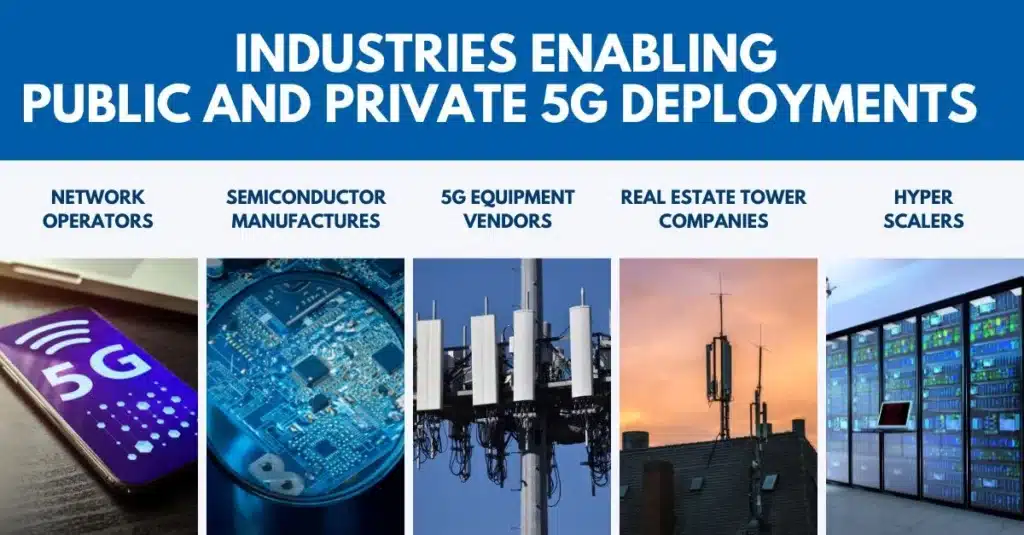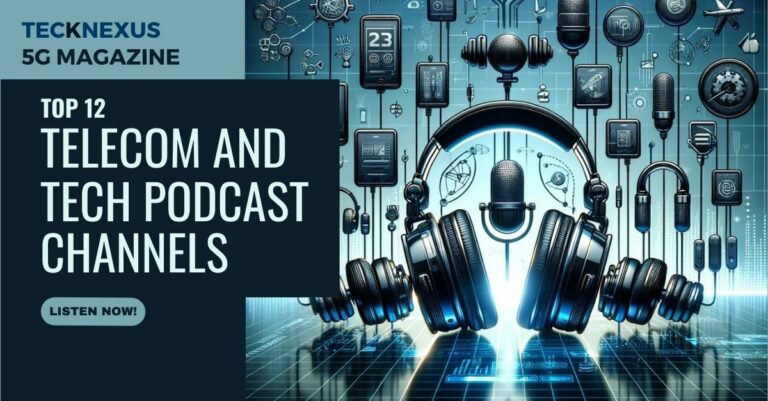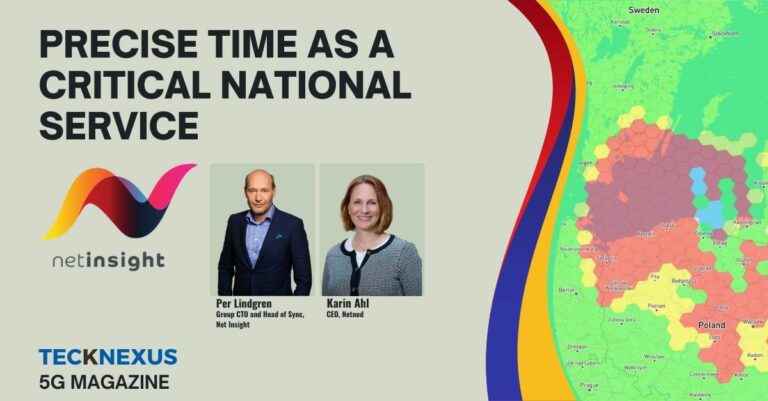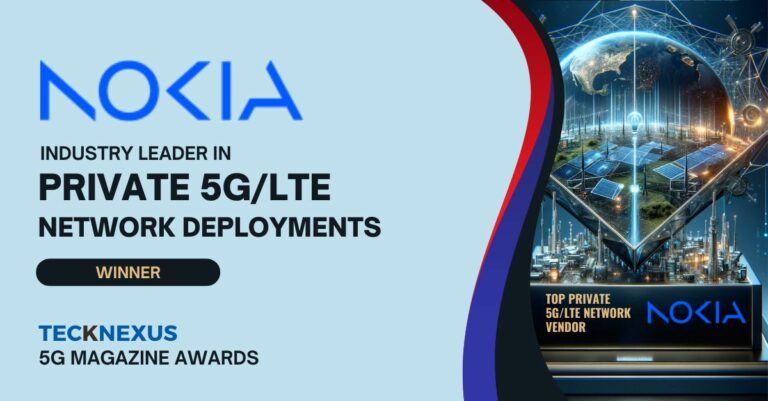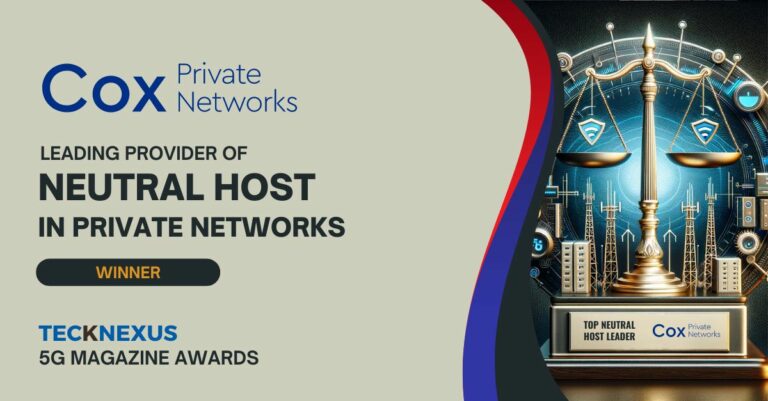5G is the fifth generation of cellular network technology, offering faster speeds and more reliable connections than previous generations. 5G networks use higher frequency radio waves than earlier networks, enabling them to carry more data over greater distances and at faster speeds. With 5G, users can expect download speeds 100 times faster than 4G.
As of December 2023, there have been over 290+ 5G network deployments globally, and the number is growing. To fuel this ongoing growth, several countries have scheduled mid-band and high-band spectrum auctions for the years 2023 to 2024. This demonstrates that the momentum behind 5G networks will stay strong throughout the coming years.
Statista and Ericsson predict the global 5G subscriptions to skyrocket and break the 1 billion mark. Statista predicts subscriptions for 5G networks are projected to skyrocket over the next several years, reaching an estimated 4 billion people by 2027. According to Ericsson Mobility Report, the number of 5G mobile subscriptions is forecast to reach 5 billion in 2028.
5G can potentially bring up to $5-7tn worth of economic value by 2030, as reported in InterDigital & ABI Research Report. For consumers and businesses (especially those deploying private 5G networks) alike, upgrading to 5G-capable cell phones and other industrial devices is a must to enable innovative applications and use cases. This transition will continue to remain a top investment opportunity far into 2023 and beyond.
5G Stocks: 5G Exchange-Traded Funds (ETFs)
Investors seeking to maximize their profits from the potential of 5G should consider a multi-pronged approach and invest in companies that provide 5G network equipment, tower infrastructure, semiconductors, and hyperscalers as well as 5G mobile network operators. Several 5G exchange-traded funds (ETFs) also offer an exciting opportunity for keen investors. Here are the eight best 5G ETFs to buy: (Source: USNews)

- Vanguard Communication Services ETF (VOX)
- Defiance Next Gen Connectivity ETF (FIVG)
- First Trust IndXX NextG ETF (NXTG)
- Fidelity MSCI Communication Services Index ETF (FCOM)
- iShares U.S. Telecommunications ETF (IYZ)
- iShares Global Telecom ETF (IXP)
- Global X Internet of Things ETF (SNSR)
- Pacer Benchmark Data & Infrastructure Real Estate SCTR ETF (SRVR)
5G Stocks: Top 5G Network Operators in the United States
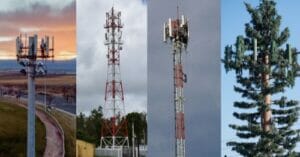
T-Mobile US (NASDAQ:TMUS), Verizon Communications (NASDAQ:VZ), and AT&T (NASDAQ:T) are rapidly increasing their 5G wireless broadband services to residences. To encourage customers to opt into the service, they have discounted packages that include both cell phones and 5G broadband services. Additionally, Dish Networks (NASDAQ:DISH) continues to roll out its 5G wireless network, solidifying itself as a leader in the satellite-TV service provider industry.
Aside from increasing their 5G network coverage, Fixed Wireless Access (FWA) and private networks constitute other key sectors in which 5G mobile network operators are either investing on their own or in partnerships with technology suppliers and hyper-scalers.
5G Stocks: Top 5G Technology and Network Equipment Companies
Ericsson | Top 5G Network Equipment and Technology Company

Ericsson is a multinational technology company based in Sweden that provides telecommunications and networking solutions, with a strong presence in Europe, North America, and Asia. Ericsson’s portfolio of solutions includes mobile networks, fixed networks, cloud and data centers, and Internet of Things (IoT) offerings – powered by 5G and IoT platforms.
Ericsson’s 5G Market Traction | Ericsson has 143 Live 5G networks across 62 countries as of Feb 2023. Sample 5G wireless operators with live 5G deployment on Ericsson’s network equipment and solutions include AT&T, China Telecom, Deutsche Telekom, Orange, Telefonica, Verizon, and Vodafone.
Ericsson’s Stock Information | As a publicly traded company, Ericsson is listed on the NASDAQ in New York (ERIC) with a market capitalization of $18.62B billion.

Nokia’s 5G Market Traction
Nokia has 269 commercial 5G deals with 98 live 5G operator networks as of Feb 2023. Sample 5G mobile network operators with live 5G networks on Nokia’s network equipment and solutions include AT&T, Bell Canada, T-Mobile, Verizon, BT, O2, Orange, China Unicom, China Telecom, NTT Docomo, and Vodafone.
Nokia’s Stock Information
As a publicly traded company, Nokia is listed on the NYSE in New York (NOK) with a market capitalization of $26.16B billion.
Samsung | Top 5G Devices, 5G Network Equipment, and Semi-Conductor Company

Samsung is a multinational conglomerate based in South Korea that operates in a wide range of industries, including electronics, semiconductors, appliances, and more. In recent years, Samsung has been heavily focused on 5G technology, both as a supplier of equipment and as a provider of end-user devices. Samsung’s 5G technology portfolio includes:
5G network equipment: Samsung is a leading provider of 5G network infrastructure, including base stations and other equipment, to mobile network operators worldwide. The company’s 5G technology is designed to provide high-speed data transmission, low latency, and massive connectivity, enabling a wide range of new use cases and applications.
5G smartphones: Samsung has released several 5G-enabled smartphones in recent years, including the Galaxy S21 5G, Galaxy S20 5G, and Galaxy Note20 5G. These devices are designed to take advantage of the high-speed data transmission and low latency provided by 5G networks, enabling faster downloads, smoother streaming, and more responsive gaming experiences.
5G chipsets: Samsung has developed its own 5G chipsets, including the Exynos 5G modem, which is used in some of the company’s 5G-enabled devices. These chipsets are designed to provide high-speed data transmission and low latency, while also being energy-efficient.
5G home routers: Samsung has also developed 5G-enabled home routers, which can provide high-speed internet access to homes and businesses without the need for traditional fixed-line broadband connections.
Samsung Devices
Samsung 5G devices include 5G phones (e.g., Galaxy Z Flip4, Galaxy Z Fold4, Galaxy S22 Ultra, , Galaxy Z Flip3 5G, Galaxy S21 Ultra 5G), 5G tablets (e.g., Galaxy Tab S8+, Galaxy Tab S8, and Galaxy Tab S7+), 5G Home Router, and 5G Chipsets (28 GHz Chipset and 5G Mode). In the US, US, all major 5G network operators offer Samsung galaxy devices, including Verizon, AT&T, T-Mobile, and US Cellular.
5G Stock Market Information
Samsung is listed on the Korea stock exchange (KSE) with a market capitalization of 407.05T KRW.
5G Stocks: Top 5G Semiconductor and Chipset Companies
Broadcom | Top 5G Chipset & Technology Company

Broadcom is a global technology company that designs, develops, and supplies a wide range of semiconductor and infrastructure software solutions. The company was founded in 1991 in Irvine, California, and has since grown through mergers and acquisitions to become one of the largest semiconductor companies in the world.
Broadcom’s products and technologies are used in a wide range of industries, including data center networking, enterprise storage, broadband communication, and industrial and automotive markets. The company’s semiconductor solutions include system-on-chips (SoCs), network processors, Ethernet switches, and wireless connectivity solutions for smartphones, laptops, tablets, and other devices. Broadcom’s infrastructure software solutions include storage management, network monitoring, and security software.
In recent years, Broadcom has focused on expanding its portfolio through strategic acquisitions. Notable acquisitions include Brocade Communications Systems, CA Technologies, Symantec’s enterprise security business, and LSI Corporation’s networking business.
With its extensive product portfolio and expertise in key areas such as networking and wireless communication, Broadcom is well-positioned to continue driving innovation and growth in the semiconductor industry.
Broadcom 5G Tech Stock Market Information
As a publicly traded company, Broadcom is listed on the NASDAQ in New York (AVGO) with a market capitalization of $248B billion.
MediaTek | Top Semiconductor/Chip Manufacturing Company

MediaTek is a Taiwanese semiconductor company that designs and manufactures system-on-chip (SoC) processors and other electronic components. The company was founded in 1997 and has since grown to become a leading provider of chipsets for smartphones, tablets, smart TVs, and other connected devices.
MediaTek’s processors are known for their affordability and versatility, making them popular with device manufacturers in emerging markets. MediaTek’s chips also often feature advanced features such as built-in AI processing capabilities and support for advanced camera technologies. In addition to its hardware offerings, MediaTek also provides software development tools and services to help developers create and optimize applications for its chipsets.
In recent years, MediaTek has been increasing its market share and competitiveness in the smartphone chip market, with its Helio series of processors being used in devices from brands like Xiaomi, Oppo, and Vivo. The company also recently announced a partnership with Intel to bring 5G connectivity to laptops using MediaTek’s modem technology.
Overall, MediaTek is an important player in the semiconductor industry and plays a significant role in powering the devices that we use every day. With its strong focus on innovation and collaboration with industry partners, MediaTek is well-positioned to continue driving growth in the semiconductor industry and supporting the development of new technologies and products for the connected world.
MediaTek 5G Tech Stock Market Information
MediaTek is listed on the Taiwan Stock Exchange under the ticker symbol “2454” with a market capitalization of 1.24T TWD. It is also listed on the over-the-counter market in the United States under the ticker symbol “MDTKF”.
Qualcomm | Top 5G Chipset & Technology Company

Qualcomm is a multinational semiconductor and telecommunications equipment company based in the United States. Qualcomm’s portfolio of solutions includes mobile processors, modems, and wireless communication technologies such as 5G and Wi-Fi. The company’s solutions are designed to enable devices to connect to wireless networks and communicate with each other. Their technology portfolio includes:
5G technology: Qualcomm’s Snapdragon X-series 5G modems and Snapdragon 5G mobile platforms are designed to enable fast and reliable 5G connectivity. These chipsets support a range of 5G frequencies, including sub-6GHz and mmWave, and can deliver multi-gigabit speeds and low latency.
Mobile processors: Qualcomm’s Snapdragon mobile processors are used in many popular smartphones, tablets, and other mobile devices. These chipsets integrate features such as CPUs, GPUs, AI accelerators, modems, and imaging processors.
Artificial Intelligence: Qualcomm has been heavily investing in AI processing capabilities, with its Snapdragon AI Engine that incorporates multiple AI hardware and software components for machine learning and advanced analytics.
Wi-Fi and Bluetooth connectivity: Qualcomm produces chipsets that support the latest Wi-Fi and Bluetooth standards, enabling high-speed data transfer and reliable connectivity.
Automotive solutions: Qualcomm provides chipsets for automotive applications, including in-vehicle infotainment systems, telematics, and advanced driver assistance systems (ADAS).
Audio and visual processing: Qualcomm’s chipsets incorporate advanced audio and visual processing technologies, enabling high-quality multimedia experiences on devices such as smartphones, TVs, and smart speakers.
Internet of Things (IoT): Qualcomm produces chipsets designed specifically for IoT applications, with features such as low power consumption and support for a range of connectivity options.
Overall, Qualcomm’s technology portfolio is focused on enabling advanced features and reliable performance across a range of connected devices, with a strong emphasis on 5G technology and AI processing. The company’s customers include original equipment manufacturers, telecommunications service providers, and other technology companies. Overall, Qualcomm is a major player in the global technology market, driving innovation in wireless communication and computing.
Qualcomm 5G Market Traction
Sample 5G smartphones using Snapdragon 5G mobile platform include Samsung (Galaxy S20 Ultra 5G phone, Galaxy S20 5G phone, Galaxy S20+ 5G phone, Galaxy Note10+ 5G phone, Galaxy A90 5G phone, Galaxy S10 5G phone), LG V50 ThinQ 5G, Xiaomi Mi MIX 3 5G, ZTE Axon 10 Pro 5G, OPPO Reno 5G and OnePlus 7 Pro 5G smartphone. Additionally, the Apple 5G iPhone 12 currently uses a Snapdragon X55 5G modem.
Qualcomm 5G Tech Stock Market Information
As a publicly traded company, Qualcomm is listed on the NASDAQ in New York (QCOM) with a market capitalization of $137.90B billion.
5G Stocks: Top Real Estate Infrastructure (Tower, DAS, Small Cell) Companies
American Tower | Top Real Estate Infrastructure (Tower, DAS, Small Cell) Company

American Tower Corporation is an American real estate investment trust (REIT) that specializes in owning and operating wireless and broadcast communications infrastructure. The company was founded in 1995 and is headquartered in Boston, Massachusetts.
American Tower owns and operates over 180,000 communication sites, including towers, rooftops, and other structures, across the United States and in several international markets. The company provides space on its infrastructure to wireless service providers, radio and television broadcasters, and other communication companies.
American Tower’s business model is based on leasing space on its communication sites to its customers, which generates a steady stream of rental income for the company. The company’s services help its customers to expand their wireless and broadcast coverage, improve network quality, and offer new services to their users.
The range of services offered by American Tower comprises the following:
Build-to-Suit: Offers a comprehensive site analysis and selection service with a detailed site data package that includes owner information, utility providers, zoning and permitting information, and preliminary site evaluations. Additionally, the service includes complete tower construction management services.
Backup Power: Provides a turnkey and fully managed backup solution that ensures continuous power to 5G applications, keeping the network up and running at all times.
Connected Buildings: Offers enhanced wireless coverage through building and venue small cell solutions, distributed antenna systems (DAS), and carrier-grade WiFi.
American Tower’s Stock Information
As a publicly traded company, AWS is listed on the NASDAQ in New York (AMT) with a market capitalization of 93.76B USD.
Cellnex | Top Real Estate Infrastructure (Tower, DAS, Small Cell) Company

Cellnex is a European telecommunications infrastructure company that specializes in the design, deployment, and management of wireless telecommunications infrastructure. The company operates in multiple European countries, including Spain, Italy, France, the Netherlands, and the UK, and is focused on supporting the growth of 5G technology across the continent. Cellnex’s 5G technology portfolio includes:
5G network infrastructure: Cellnex provides infrastructure services to mobile network operators to support the deployment of 5G networks. The company’s infrastructure includes towers, rooftops, and other facilities that are designed to support the high-speed data transmission and low latency required by 5G networks.
Small cells: Cellnex has also developed small cells, which are compact base stations that can be deployed in densely populated urban areas to improve coverage and capacity. Small cells are a key component of 5G networks, as they can provide high-speed connectivity to users in areas where traditional macrocells may not be practical.
Distributed antenna systems (DAS): Cellnex also offers DAS solutions, which are systems that distribute wireless signals across large indoor or outdoor spaces. DAS systems are a key component of 5G networks, as they can help ensure consistent coverage and capacity in large public spaces such as airports, stadiums, and shopping centers.
Overall, Cellnex’s focus on 5G technology reflects its commitment to supporting the growth of next-generation wireless networks across Europe. As the demand for high-speed connectivity continues to grow, Cellnex is well-positioned to play a key role in enabling the deployment of 5G networks and supporting the development of new applications and use cases.
Cellnex’s Stock Information
Cellnex is listed on the Spanish Stock Exchange (Mercado Continuo Espana – CLNX.MC), selective IBEX35 and EuroStoxx 600, and the MSCI Europe index with a market capitalization of 24.459B EUR.
5G Stocks: Top Edge Computing and Technology Companies (Hyper-Scalers)
Amazon (AWS) | Top Edge Computing Company

Amazon Web Services (AWS) is a prominent global cloud infrastructure platform that provides services to customers in more than 245 countries. AWS offers a comprehensive range of 5G and Edge technology services for Communication Service Providers.
One of its flagship offerings, AWS Wavelength, combines the high bandwidth and ultra-low latency of 5G networks with AWS compute and storage services to enable developers to build high-performance mobile edge computing applications. These can include game streaming, interactive live video, and event streaming, AR/VR applications, in-car telematics, and industrial automation. AWS Wavelength zones, available in 10 cities in the US with Verizon, Tokyo, Japan with KDDI, and Daejeon, South Korea with SKT, are AWS infrastructure deployments that embed AWS compute and storage services within an operator’s data centers at the edge of the 5G network. This allows application traffic from 5G devices to reach servers in the wavelength zone without leaving the operator’s network.
Another offering from AWS is AWS Local Zones, which enables AWS to compute, storage, database, and other services to be placed near end-users in a specific geographic area, allowing them to run applications with single-digit millisecond latency. AWS Outposts allows customers to perform computing and storage on-premises to meet latency requirements. The AWS Snow Family, consisting of AWS Snowcone, AWS Snowball, and AWS Snowmobile, offers various physical devices, capacity points, and built-in computing capabilities to support applications that require increased capabilities and performance at the edge. Some examples of use cases that can benefit from the Snow Family include IoT for manufacturing and healthcare and private LTE/5G network deployments.
AWS’s Stock Market Information
As a publicly traded company, AWS is listed on the NASDAQ in New York (AMZN) with a market capitalization of 1.01T USD.
Azure (Microsoft) | Top Edge Computing and Technology Company

Microsoft Azure is a prominent cloud infrastructure platform that comprises over 160 interconnected physical data centers distributed across 60 regions and more than 170 POPs. It features an extensive network of fiber optic and undersea cable systems, providing connectivity at 100 Gbps via Azure ExpressRoute, from data center to cloud.
Microsoft’s 5G and Edge Technology Portfolio includes the following offerings for Communication Service Providers:
Azure Edge Zones: connects Azure services directly to 5G networks in the operator’s data center, enabling developers to create applications requiring ultra-low latency such as online gaming, remote meetings, and events. Examples of operators that have expanded their collaboration with Microsoft Azure include AT&T, Etisalat, NTT Communications, Proximus, Rogers, SK Telecom, Telefonica, Telstra, and Vodafone Business.
Azure Private Edge Zones: combines a private 5G/LTE network with Azure Stack Edge on-premise to deliver high-bandwidth, ultra-low latency, and secure solutions. Applications that can benefit from Azure Private Edge Zones include smart factory/IoT use cases, logistics and operations for retail customers, and smart grids at hospitals for remote diagnostics.
vEPC (Virtual Evolved Packet Core): enables 5G NSA (Non-Standalone), CUPS (Control and User Plane Separation), network slicing, integrated virtual probe, virtualized DPI, GiLAN, analytics and security services, virtualized Wi-Fi, automation, and orchestration capabilities via the Affirmed Networks acquisition.
Fusion Core: an enterprise 5G/4G network solution that utilizes CBRS, LTE-U, and NR-U, consisting of 5G user plane function, control plane functions, network orchestration, and automation capabilities through the Metaswitch acquisition.
Microsoft’s Stock Market Information
Microsoft is a publicly traded company listed on the NASDAQ in New York (MSFT) with a market capitalization of 2.08T USD.


